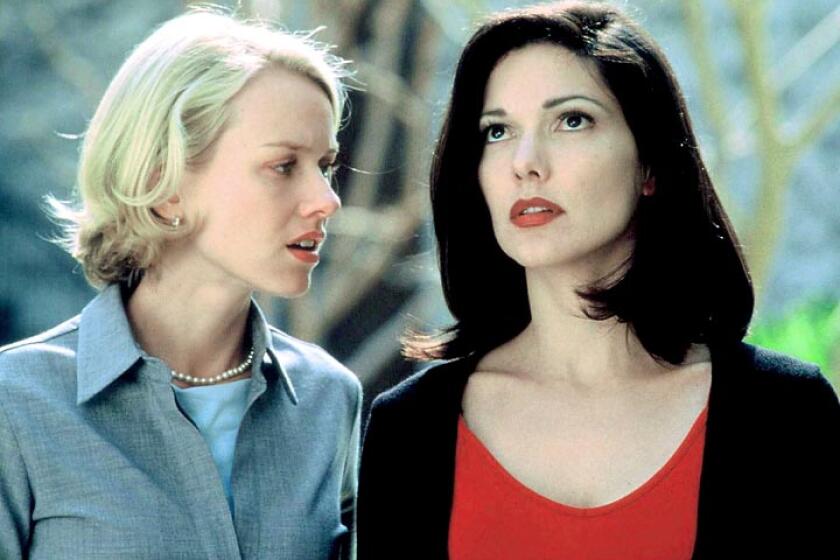Robert Towne: Gauguin, Van Gogh, James Agee and me
- Share via
What sets a great screenwriter on his path? Picking up a lifetime achievement award from the writer’s organization PEN West last month, Robert Towne (“Chinatown,” “Shampoo,” “Mission: Impossible”) thought back to his beginnings. Here is an excerpt from his remarks.
I grew up in a time when Los Angeles and screenwriting were viewed along similar lines -- the best thing about L.A. was that you could turn right on a red light, and the best thing about screenwriting was that you could take the money and run. More and more, of course, the profession has taken on the veneer of respectability -- to my knowledge, there wasn’t a single course in screenwriting anywhere in the country when I wrote my first film.
I remember, when Roman [Polanski] and I began the rewrite on “Chinatown,” he actually found a lone book on the subject and inscribed: “To my dear colleague, with fond hope.” His inscription was the only thing in the book either one of us read. I mention this prevailing wisdom about screenwriting, then, not out of any particular defensiveness, but more out of nostalgia, really, and fond memories of days when it was still nicely disreputable.
I don’t remember the exact moment when I decided that I would take up screenwriting, but I do remember a defining moment for me when I realized that it was something that I, at least, could take seriously.
It came in 1959 in the form of a James Agee screenplay, “Noa Noa,” which is about the life of Gauguin. One scene in particular affected me -- Gauguin and Van Gogh painting side by side in a studio. Vincent at one easel, Gauguin at another:
A short silence of hard peaceful work; the closed stillness of a rainy day; their unspoken tensions. Then a daddy longlegs gets stuck in the paint on Gauguin’s easel. Gauguin brushes him off the canvas, drops him and there’s an insert of Gauguin’s shoe about to crush the disabled insect.
Vincent cries out in anguish, “No, Paul, don’t. Let me have him.”
Van Gogh picks up the insect very carefully and sits down, talking to it, “Were you hurt? Let’s just see now....” While he coos and tries to reassure the daddy longlegs, he takes a match, dips it in turpentine and delicately begins to clean each one of the bug’s hair-thin legs. “We don’t want to lose any more legs, do we? We’ve just got to get this miserable paint off ... or you’ll be crippled.”
Gauguin to Vincent: “He’s crippled already. Who wants to live crippled?”
And Vincent to the bug: “Life is a sacred gift, isn’t it? Isn’t it, my dear? You don’t want to die until God tells you it’s time....”
Agee lets this scene run while Vincent painstakingly finishes polishing off one leg after another and carefully lets the bug limp off the palette onto his hand, his knee and the floor, allowing the bug to walk again.
Gauguin’s response is to remove the canvas he’s working on and to put up a fresh one. “Vincent,” he says, “I want to paint your portrait.”
Van Gogh is flattered, but reluctant and even worried. “Why do you want?”
“I’ve seen something that interests me, just let me do it.”
Then Agee has Gauguin at work on Van Gogh while Van Gogh is at work on his sunflowers, increasingly aware and uncomfortable with Gauguin’s surgically close scrutiny. The tension mounts as Agee suggests Gauguin’s gaze boring into Vincent -- his head, his nose, his eyes -- with Van Gogh all but writhing under Gauguin’s X-ray scrutiny.
“Can I see it, Paul?”
“Don’t move.”
“But ... “
“Shut up. I’ve got it.”
Van Gogh is perspiring, feverish, terrified; Gauguin is cold, intense and busy.
Finally, Gauguin, a little trepidatious and sweating himself now, shows Van Gogh his portrait and Vincent looks and says, “It’s me, Paul. It’s me, all right ... but it’s me already gone insane.”
The scene had my heart in my throat, and I suddenly felt that I wasn’t reading a scene, I was seeing it, and I realized then that a good screenplay could actually read like it’s describing a movie already made.
It made me realize that so much of what I wanted to say I wanted to show, or to put it another way, what I wanted to show is so much of what I had to say. I was pretty much stuck with movies as a way of saying it.
And so I’ve given it a whirl.
More to Read
Only good movies
Get the Indie Focus newsletter, Mark Olsen's weekly guide to the world of cinema.
You may occasionally receive promotional content from the Los Angeles Times.










